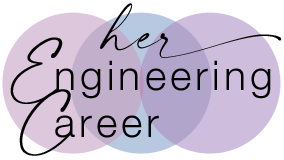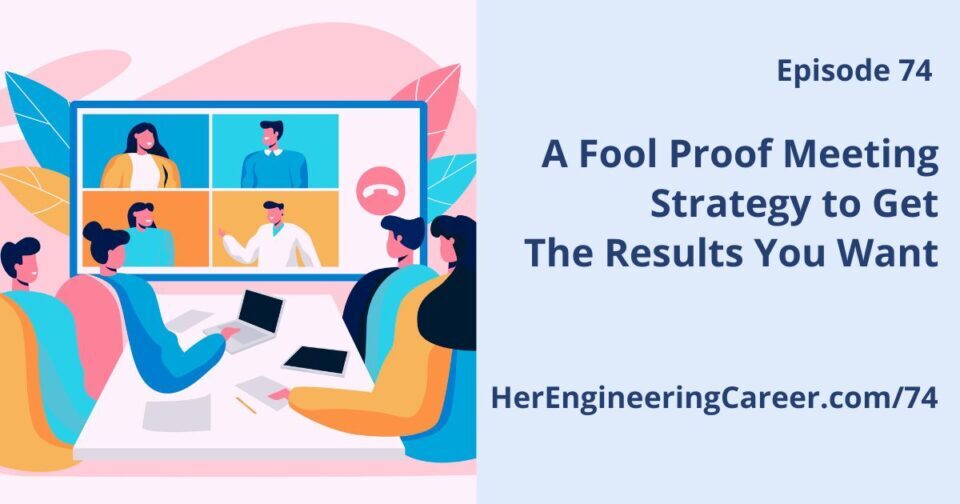Episode Transcript
Meetings have always been a big part of your engineering career. And now that there are virtual options, you’re putting more emphasis on meetings than ever.
With hybrid work structures, it’s harder to get meetings set up. Scheduling around people’s availability is a challenge.
Besides the usual planning, you have to decide whether your meeting should be in person or virtual or both. And each version has its challenges.
All this time in meetings has a big effect on your schedule and productivity. And how meetings are run affects how you’re able to do your job.
So let’s revisit this topic of meetings today. And how you can best lead them to meet your goals efficiently.
If it’s your meeting, you want people to attend and participate, and you want to meet your meeting objectives.
But to get what you want means knowing what everybody else needs. You can get the most from your meetingand your meeting attendees if they’re informed, prepared, and included.
Think about your own expectations when you go to someone else’s meeting, and you’ll see what I mean.
No matter what the meeting format, people basically want to know what are we doing here? and how fast can we get it done? So you can use that as your template for meeting prep.
Get What You Want from Your Engineering Meetings
Here are some guidelines for getting what you want from your engineering meetings. Each guideline answers a key question that your meeting invitees will have.
- Why are we here?
This is the first question people want to know the answer to. Their time is precious. And, just like you, they want to be sure they’re spending time on what’s most important.
You’ll already have determined the purpose of your meeting. Be sure the purpose is clear. And share it with everyone ahead of time.
People also want to know that a meeting is actually needed to accomplish the objectives. And that the objectives are achievable within the meeting. So be sure to give those reassurances, too. Scope it well so that, again, people know they’re not wasting their time.
- What do we need to get done at this meeting?
This question is important to set expectations and get everyone on the same page. It’s helpful if you write a short description of what you expect to accomplish during your meeting time and send it out with an agenda.
An effective agenda includes:
- topics that are meaningful to attendees
- appropriate time frames for each topic and
- any necessary breaks, Q&A or discussion times.
Send the agenda (and the description) ahead of time so people can plan and know how to prepare.
- What’s in it for me?
More than just knowing why we’re here, each person wants to know why am I here? What do I get out of this meeting?
The benefit for attending might be gaining new insight. Meeting influential people. Learning about new technologies. Or having the opportunity to share expertise. There are many possibilities.
Let individuals know the benefit to them of attending and participating.
This may seem to you like you’re getting too far into the weeds. But extending that extra courtesy and explaining the ROI for attending the meeting can ensure that the people you need to be there actually show up.
- How can I help?
People also want to know what their role is in the meeting. You might want them to lead a discussion. Present some data. Give their recommendations. Or just be an observer.
Whatever you’re expecting may not be obvious. So you have to tell people. Informing them of their role ahead of time will encourage them to be prepared. And it’ll keep your meeting on the right track.
More Tips for An Exceptional Engineering Meeting
There are some great tips for you as a leader of engineering meetings in my 4 Steps to Better Meeting Outcomes back in Episode 14. I’ve alluded to a few of them in my guidance today. But I encourage you to go back and listen to that one.
Here are 5 more meeting tips that are especially important in this day of virtual and hybrid meetings. Most show respect for your attendees. But they also serve to help you get the meeting results you want:
- Watch Your Timing. Starting on time and ending on time is just common courtesy. But also recognize that many people have back-to-back meetings all day long, and end your meeting before the top of the hour. (Or the bottom of the hour as the case may be.)
That way people get a break before they have to log on to their next call.
- Check Your Technology. Technology is great…until it isn’t. Schedule time to make sure the hardware and software work. And that everyone is comfortable with it.
You’ll avoid those inevitable technology glitches that derail your meeting and raise the frustration level.
- Strive for Inclusion. Find ways to get everyone involved in the meeting. This one has proven to be a challenge in the virtual world. But following the guidance we just talked about on attendees’ roles and ROIs will help.
- Take Breaks. People can give you their attention for about 90 minutes. Then they need to recharge. Please include scheduled breaks for longer meetings. This gives everyone a chance to get away from the screen without missing any of the agenda.
- Less is More. Sometimes there’s a tendency to schedule more or longer meetings because virtual is “easy.” And, well, don’t do that.
If you can accomplish the objective another way – by email or a few quick calls – you can save people time and aggravation.
It’ll take some time up-front on your part. But the more you can follow these guidelines, the more often you’ll end up with the results you need.
People will notice your skill at running meetings. And you’ll be a respected engineer known for your leadership and professionalism.
Before we close please consider sharing my podcast with someone you know. This is a great way to get my episodes out to the people who need them.
Teach a friend or colleague how to get to it through your favorite podcast app. Or simply share the link. I so appreciate you for doing that.
Next time on Her Engineering Career Podcast the topic will be the pros and cons of interim positions for women engineers. You won’t want to miss Episode 75.

